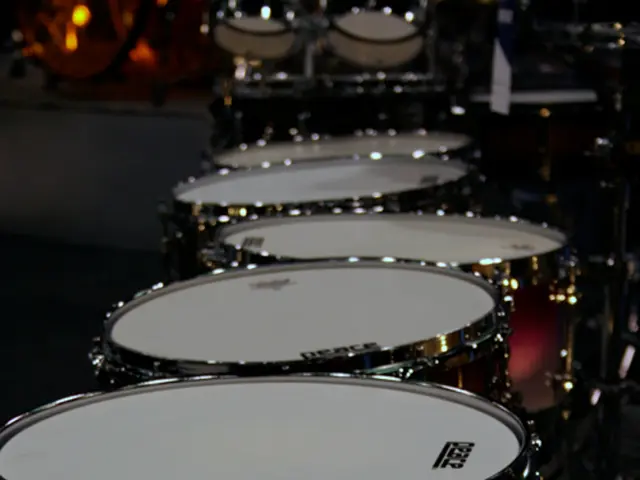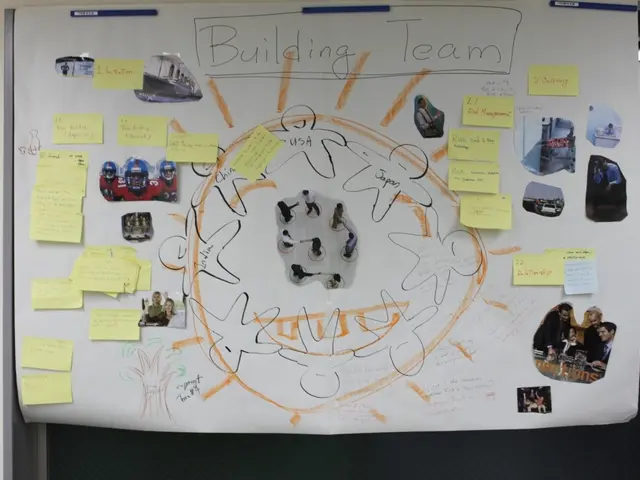Planetary Encounters in August 2025: Jupiter and Venus draw near, Neptune and Saturn dance, Uranus links with the Pleiades - Astronomical Preview
August 2025 to Witness a Spectacular Planetary Parade
Get ready for an extraordinary celestial event this August as six planets align in the morning sky, creating a breathtaking "planet parade" or "planetary alignment." This rare occurrence is set to take place around August 10, 2025, and can be seen across much of the Northern Hemisphere.
The alignment includes Mercury, Venus, Jupiter, Saturn, Uranus, and Neptune. Mercury, Venus, Jupiter, and Saturn will be visible to the naked eye about an hour before sunrise, forming an arc from east-northeast to south. Uranus and Neptune, while part of the alignment, are fainter and require binoculars or a telescope to be observed.
Venus and Jupiter will be especially bright and close in the eastern sky, culminating in a close conjunction on August 12, appearing almost as a double star. Saturn and Neptune will be positioned higher in the southern sky, with Neptune above Saturn in the constellation Pisces. Uranus will be visible near the Pleiades star cluster in Taurus.
Mars will not be part of this alignment, as it rises and sets with the Sun during August 2025 and is not visible in the morning sky.
Here's a summary table of the planets visible in the August 2025 morning sky alignment:
| Planet | Visibility | Brightness | Notes | |----------|-----------------------|-----------------------|--------------------------------------------| | Mercury | Pre-dawn eastern sky | Naked eye | Part of the six-planet lineup | | Venus | Pre-dawn eastern sky | Very bright (morning star) | Close conjunction with Jupiter around Aug 12 | | Jupiter | Pre-dawn eastern sky | Very bright | Joins parade August 1, near Venus | | Saturn | Pre-dawn southern sky | Naked eye | Higher in south, near Neptune | | Uranus | Pre-dawn eastern sky | Requires binoculars/telescope| Near Pleiades cluster in Taurus | | Neptune | Pre-dawn southern sky | Requires binoculars/telescope| Above Saturn in Pisces constellation |
By the end of August, Jupiter appears 23° above the eastern horizon before dawn. Saturn and Neptune are visible in the eastern sky just after sunset and all night, then in the south as the Sun rises. Mercury will be visible in the morning sky by late August, no longer being swallowed by the Sun's glare.
On 12 August, Jupiter and Venus will appear so close together they'll look like a double star. Neptune is just over a degree from Saturn and, like Saturn, is able to reach maximum altitude under true darkness from the middle of the month onwards.
Jupiter is a morning planet and has a close encounter with Venus on 12 August. Jupiter and Venus are visible in the eastern sky before sunrise in August 2025.
On 19 August, Mercury shines at mag. +0.1 and is 2.5° south of the Beehive Cluster, M44, but the morning twilight will mask the cluster stars. If you can locate Saturn, Neptune can be spotted above it with a telescope or binoculars. The two planets are getting closer to each other, culminating in a conjunction on 12 August.
By the end of August, Saturn's brightness will have increased slightly to mag. +0.3. On 19 August, Mercury rises a little under 2 hours before the Sun.
Uranus is below the Pleiades star cluster and will be tracking beneath the Pleiades as the month goes on. On 20 August, Jupiter, Venus, and a waning crescent Moon form a distinctive morning triangle.
This rare planetary parade will be a stunning cosmic event for early risers in August 2025. So, mark your calendars and prepare for a mesmerizing astronomical spectacle!
- Astrophotography enthusiasts and avid stargazers can look forward to capturing the breathtaking "planetary parade" in August 2025, where six planets align in the morning sky.
- For those interested in environmental science, the alignment will provide an opportunity to study the diverse range of celestial bodies, including Uranus and Neptune, which require binoculars or a telescope for observation.
- Those pursuing health-and-wellness or fitness-and-exercise routines can combine their passion with the wonders of space-and-astronomy by waking up early to witness this rare planetary alignment.
- As technology advances, stargazers can utilize various apps and software to predict precision timing and optimal viewing locations to fully appreciate this spectacular celestial event in August 2025.






